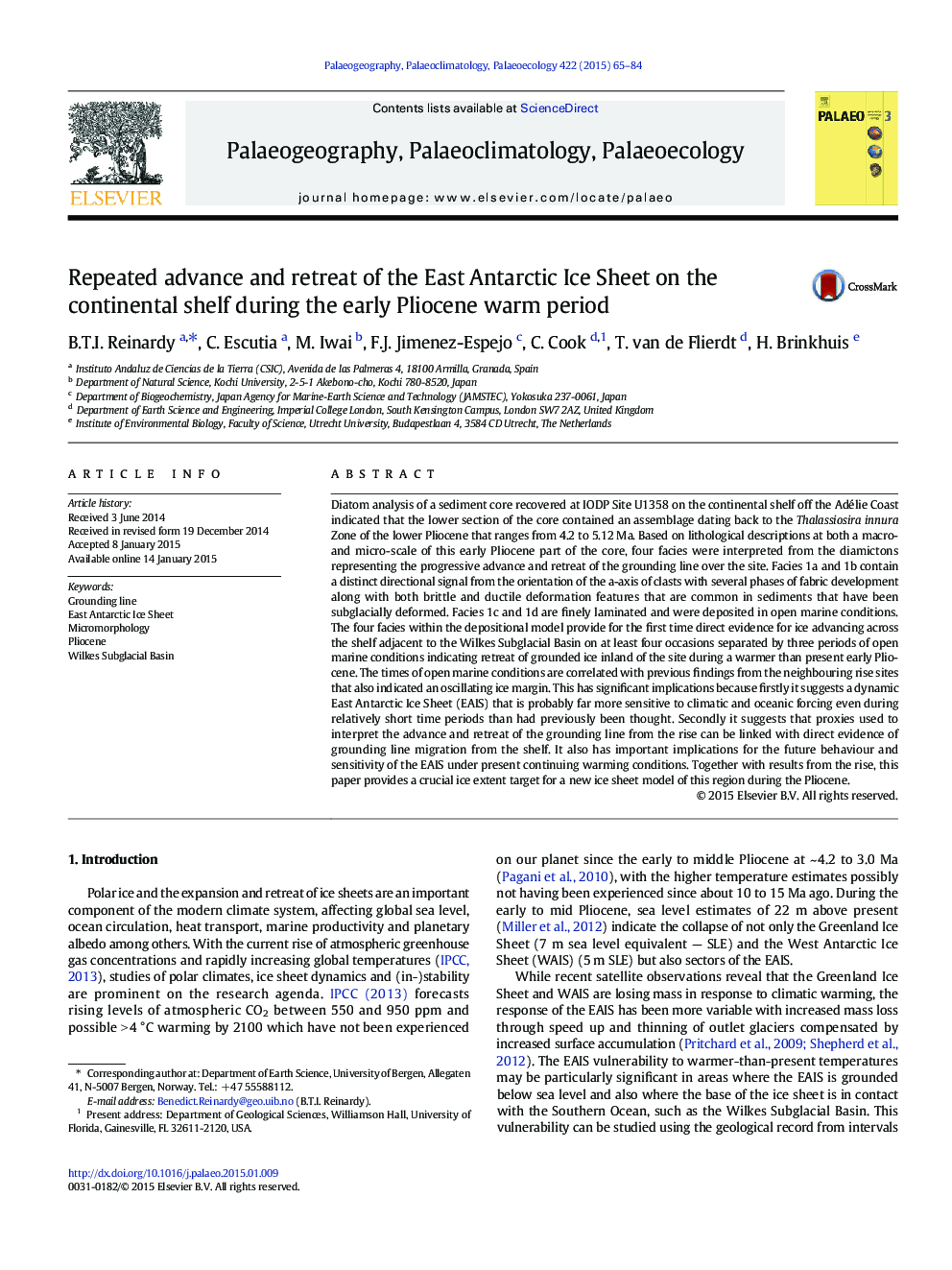| Article ID | Journal | Published Year | Pages | File Type |
|---|---|---|---|---|
| 4466021 | Palaeogeography, Palaeoclimatology, Palaeoecology | 2015 | 20 Pages |
•Deposition on the Antarctic shelf interpreted using micromorphology•Diatom assemblage from shelf site indicates Pliocene age sediments.•The site was open marine three times and covered by ice at least four times.•Proxies from the rise can be linked with grounding line migration from the shelf.•EAIS is more sensitive to climatic and oceanic forcing than previously suggested.
Diatom analysis of a sediment core recovered at IODP Site U1358 on the continental shelf off the Adélie Coast indicated that the lower section of the core contained an assemblage dating back to the Thalassiosira innura Zone of the lower Pliocene that ranges from 4.2 to 5.12 Ma. Based on lithological descriptions at both a macro- and micro-scale of this early Pliocene part of the core, four facies were interpreted from the diamictons representing the progressive advance and retreat of the grounding line over the site. Facies 1a and 1b contain a distinct directional signal from the orientation of the a-axis of clasts with several phases of fabric development along with both brittle and ductile deformation features that are common in sediments that have been subglacially deformed. Facies 1c and 1d are finely laminated and were deposited in open marine conditions. The four facies within the depositional model provide for the first time direct evidence for ice advancing across the shelf adjacent to the Wilkes Subglacial Basin on at least four occasions separated by three periods of open marine conditions indicating retreat of grounded ice inland of the site during a warmer than present early Pliocene. The times of open marine conditions are correlated with previous findings from the neighbouring rise sites that also indicated an oscillating ice margin. This has significant implications because firstly it suggests a dynamic East Antarctic Ice Sheet (EAIS) that is probably far more sensitive to climatic and oceanic forcing even during relatively short time periods than had previously been thought. Secondly it suggests that proxies used to interpret the advance and retreat of the grounding line from the rise can be linked with direct evidence of grounding line migration from the shelf. It also has important implications for the future behaviour and sensitivity of the EAIS under present continuing warming conditions. Together with results from the rise, this paper provides a crucial ice extent target for a new ice sheet model of this region during the Pliocene.
